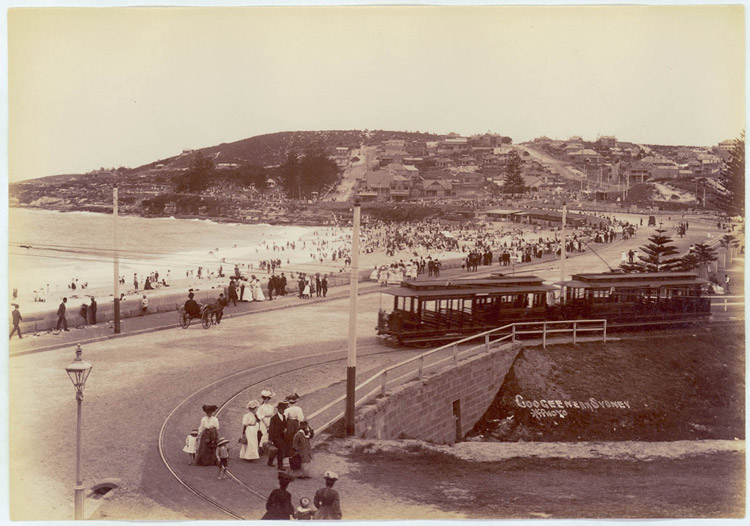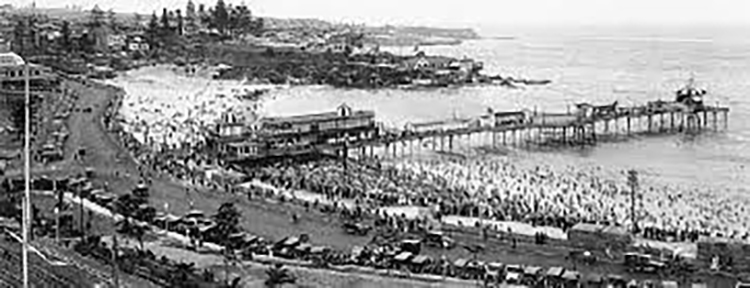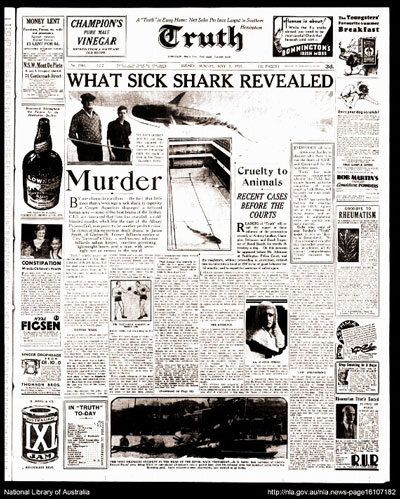The name Coogee is derived from the Aboriginal word 'koojah' which means 'bad smell' thought to refer to the 'smell of seaweed drying', which sometimes still washs up on Coogee Beach and leaves a distinctive smell.
The early days of European settlement in Coogee saw it flourish as a market gardeners paradise. Many of the first residents Large mansions were being built in Coogee by the late nineteenth century by wealthy Sydney residents who were establishing their status in society with imposing homes by the seaside.

Coogee – Good Old Days
The Coogee Aquarium and Swimming Baths were officially opened on 23 December 1887, on a block of land between Arden Street, Beach Street, Bream Street and Dolphin Street.
The Palace included a 25m indoor Swimming pool, an aquarium, a great hall that could be used as a roller skating rink, toboggan ran down the hillside for over 70 meters, and a herd of 14 donkeys to ride as well as swings, whirligigs, rocking horses, toy boats, aviaries, flower beds, bandstand and an open-air bar.
A devastating storm in June 1945, caused the large dome to collapse. The Coogee Palace Dome was re-built in 1987 and converted to restaurants and bars. In 2014 the building re-opened as the Coogee Pavilion] in a $30 million+ renovation by the Merivale group, and its director Justin Hemmes.
Coogee’s Pier was built in 1928, and extended 183m into the ocean from the middle of the beach but lasted only a few years before it was largely destroyed in a sea storm and had to be demolished in 1934.
It is testament to Coogee's aspiration to be a British seaside resort in the tradition of Brighton.

Coogee Beach – Circa 1930
The famous Wylie's Baths opened in 1907 by Henry Wylie, and still operate today beyond the southern extremity of Coogee Beach. The Baths were the training ground for Olympic Silver medallist Mina Wylie, the first Australasian woman to win a silver medal for swimming at the Stockholm Olympics in 1912. They have been beautifully restored.
Around the same time in 1907, the Coogee Surf Life Saving Club was established by locals who believed swimmers needed protection from the dangers of the surf.
The CSLSC prides itself on being a pioneer in the realm of surf life saving. In fact, the first mass rescue, night surf carnival, shark attack and the development of the resuscitation technique are attributed to the club.

Anzac Day 1935 saw one of the more infamous episodes in Coogee's history when a shark at the Coogee Aquarium, regurgitated the tattooed arm of a man.
The arm belonged to a missing person, James Smith, who was identified by a tattoo. The arm had been cut off, which led to a murder investigation.
Nobody was ever charged over the murder, although another local criminal, Reginald Holmes, was found shot in a car near the Sydney Harbour Bridge the day before the inquest into Smith's death was due to start.
Today, Coogee is one of Australia's more densely populated areas, with apartment buildings in every style from the 1930s onwards with some free-standing houses remain. The suburb is a popular destination for tourists, particularly backpackers.
For further information, please contact us directly on 1300 132 970 or email at This email address is being protected from spambots. You need JavaScript enabled to view it.